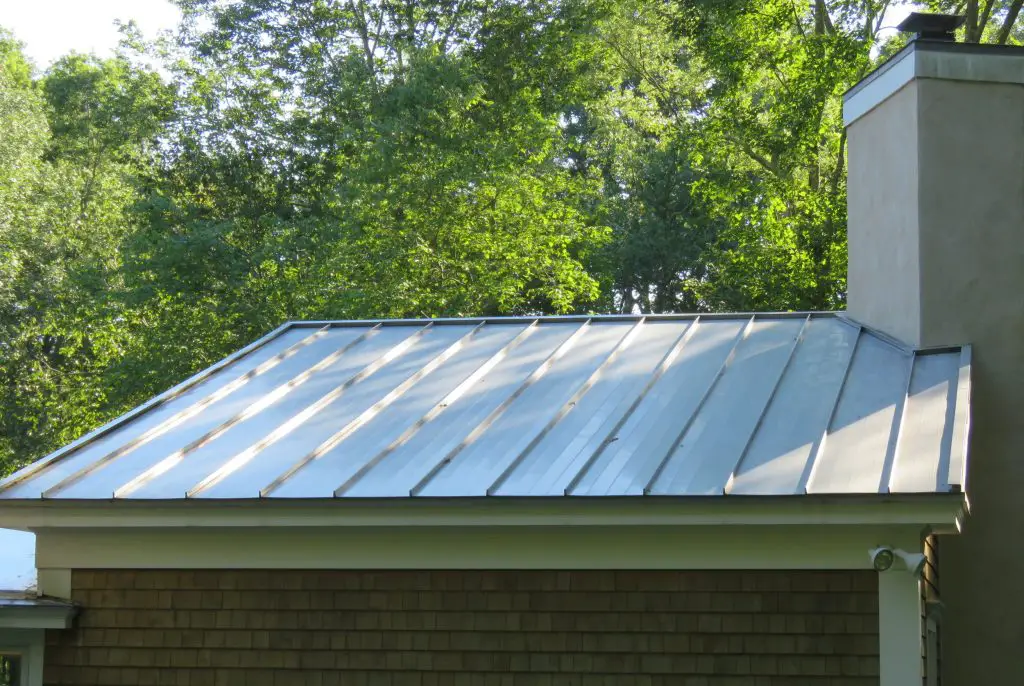How Your Roof Can Make Your Home More Energy Efficient
By Charlotte Granville • Published November 6, 2023
Reviewed by Jack Gray, Roof Online Editor

Table of Contents
Introduction
An energy-efficient roof can significantly reduce the amount of heat entering or exiting your home, thereby lowering the workload of your heating and cooling systems and saving you money on your energy bills.
The journey towards a more energy-efficient home starts with understanding the role of roofing materials in your energy conservation, the importance of proper insulation and ventilation in your attic, the potential of harnessing solar energy, and the need for regular roof maintenance.
This article provides a comprehensive guide on these factors to help you make informed decisions when it comes to enhancing your home’s energy efficiency.
Understanding Roofing Materials and Their Energy Efficiency
The material you select for your roof is a pretty big factor in determining the energy efficiency of your home. Here’s a closer look at some of the most common roofing materials and their energy efficiency profiles:
Most energy-efficient roofing materials
Metal roofs are one of the most energy efficient materials available. Their reflective properties, coupled with their recyclability, make metal roofs a choice that benefits both homeowners and the environment.
Cool roofs are also able to reflect sunlight and minimize heat absorption. This innovative design is particularly beneficial in reducing cooling costs, as it keeps buildings cooler naturally.
Another energy-efficient roofing option is green roofs, which are as functional as they are ecologically sound. By integrating a layer of vegetation, they can act as a natural insulator for your home. On top of that, green roofs can also manage stormwater, which can reduce the risk of flooding around your home.
Other Roofing Materials
Other roofing materials worth mentioning for their energy efficiency are concrete, clay, and slate tiles. These materials are naturally thermal-resistant which reduces heat transfer.
Rubber roofs are one of the most affordable and easy-to-maintain roofing types out there. As well as being recyclable, they’re energy-efficient, especially TPO roofs.
Beyond their aesthetic appeal, wood shingles are a great natural insulator. This quality can help keep your home warmer in the winter and cooler in the summer, making for a more stable and comfortable indoor environment. However, wood is also more susceptible to weathering and can be damaged by rain, wind, and pests.
To preserve their insulating properties and maintain their aesthetic, wood shingles and shakes require regular maintenance. This includes treatments to prevent mold, rot, and insect damage, which, if neglected, can lead to a decrease in energy efficiency and a need for more frequent repairs or replacements.
Asphalt shingles have long been the go-to choice for homeowners looking for affordable roofing. However, this common roofing material comes with a downside when it comes to energy efficiency. The dark shade of asphalt shingles means they tend to absorb heat.
This can become a significant factor in warmer climates or during the hot summer months, leading to increased indoor temperatures and therefore a heavier reliance on air conditioning. The result is a rise in cooling costs, which can add up over time, potentially taking away from the initial savings from their lower installation price.
The Power of Insulation and Ventilation
Insulation works wonders for your home’s comfort, regulating temperatures and keeping your energy costs in check. Ventilation is the breath of fresh air your roof needs, essential for reducing heat and moisture build-up. Here’s how:
Insulation
A well-insulated roof serves as a home’s shield against the weather, functioning much like a thermal blanket. During the cold winter months, it retains heat, keeping your home warm. As summer comes around, it reflects the sun’s intense rays, maintaining a cooler interior.
This temperature regulation is crucial not only for comfort but also for reducing your home’s reliance on heating and cooling systems.
When it comes to choosing insulation, there are a few different options. Fiberglass is a popular choice for its cost-effectiveness and ease of installation. Cellulose, made from recycled paper, is popular for its environmental benefits. Foam insulation, while often more expensive, provides a high level of efficiency due to its air-sealing capabilities.
The right insulation for your home will depend on your local climate, so it’s best to speak to a professional to get the best results.
Ventilation
A well-ventilated roof draws in fresh air and expels the stale, hot, and moist air that gets trapped in your attic. This continuous cycle of air circulation is vital for maintaining the integrity of your home and preventing the accumulation of heat.
There are a few different types of roof ventilation you can choose from. Ridge vents, perched discreetly along the roof peak, silently expel hot air, while soffit vents draw cooler air into the attic.
If your home requires more air movement, attic fans can actively push out the hot air. Again, it’s best to consult an expert for the particular needs of your home when choosing your roof’s ventilation system.
Harnessing Solar Energy
Solar energy is not just a trend; it’s a revolution in the making. It’s the key to unlocking a future where homes not only shelter but also power themselves. Here’s why you should consider going solar:
Solar Panels vs. Solar Roofing Systems:
Solar panels’ proven efficiency has made them a popular choice for homeowners looking to tap into the sustainable power of the sun. These panels have a track record of reliability and are the most effective way of producing solar energy for your home’s needs.
On the other side of the spectrum are the more innovative solar roofing systems, such as solar shingles and tiles.
These systems serve a dual purpose: they offer the protective qualities of traditional roofing materials while seamlessly integrating the ability to harness solar energy. They may not produce as much solar energy, but they blend perfectly into your home’s exterior without compromising on aesthetic appeal.
The Benefits of Going Solar:
Embracing solar energy for your home may come with an upfront cost that seems daunting at first glance. However, the long-term financial benefits can’t be ignored.
Over time, the reduction in electricity bills becomes evident, offering a return on investment that extends well beyond the initial expenditure. This cost-effectiveness can be further sweetened by various financial incentives. Governments and local authorities often provide enticing rebates, incentives, and tax credits, all designed to lighten the financial load of transitioning to solar power.
Solar roofs can also offer you energy independence, liberating you from the unpredictability and often higher costs of grid-supplied power. During peak usage times, when energy demand surges and prices soar, your solar-powered home can remain unaffected.
Roof Maintenance for Sustained Energy Efficiency
Regular roof maintenance is a crucial aspect of an energy-efficient home. It’s the guardian that ensures your roof continues to perform at its peak, shielding your home (and your wallet) from the elements. Here’s how to keep your roof in tip-top shape:
Inspections
Routine roof inspections are like regular health check-ups for your home, made to catch potential problems early on. These inspections are crucial for spotting the first signs of wear, such as loose or missing shingles, subtle cracks, or the beginnings of a leak before they become more costly issues.
Repairs
Addressing roof issues promptly is essential to prevent minor problems from escalating into major repairs. A small leak might seem like a minor inconvenience, but it can lead to significant energy waste as heated or cooled air escapes. By sealing leaks and repairing damage quickly, you maintain the insulative integrity of your roof.
Regular cleaning to remove debris, as well as gutter maintenance, also plays a critical role in preserving your roof’s condition and ensuring efficient water drainage, which protects its structural integrity.
Enhancements
Applying reflective coatings and sealants can further enhance your roof’s energy efficiency. Reflective coatings can help your roof to reflect sunlight, and sealants can provide an additional layer of protection against leaks and improve thermal resistance.
If your roof is in need of regular repairs, it may be due to the fact that it’s nearing the end of its lifespan. So if your roof’s days are numbered, investing in a new, energy-efficient replacement could be the key to long-term energy and cost savings.
As a homeowner, taking the time to understand the various roofing options and maintenance practices can lead to both significant savings on your energy bills and a reduction in your carbon footprint. It’s an investment to be made not just for your home, but for a more sustainable future.
Charlotte Granville is a home remodeling specialist at Fixr.com.

With a Bachelor’s degree in Visual Communications, she analyses industry data to provide homeowners with the best advice and visual representations of the home improvement sector. She is passionate about promoting sustainability within the home, and with a personal interest in interior design, she is always up to date about the latest home remodeling trends.